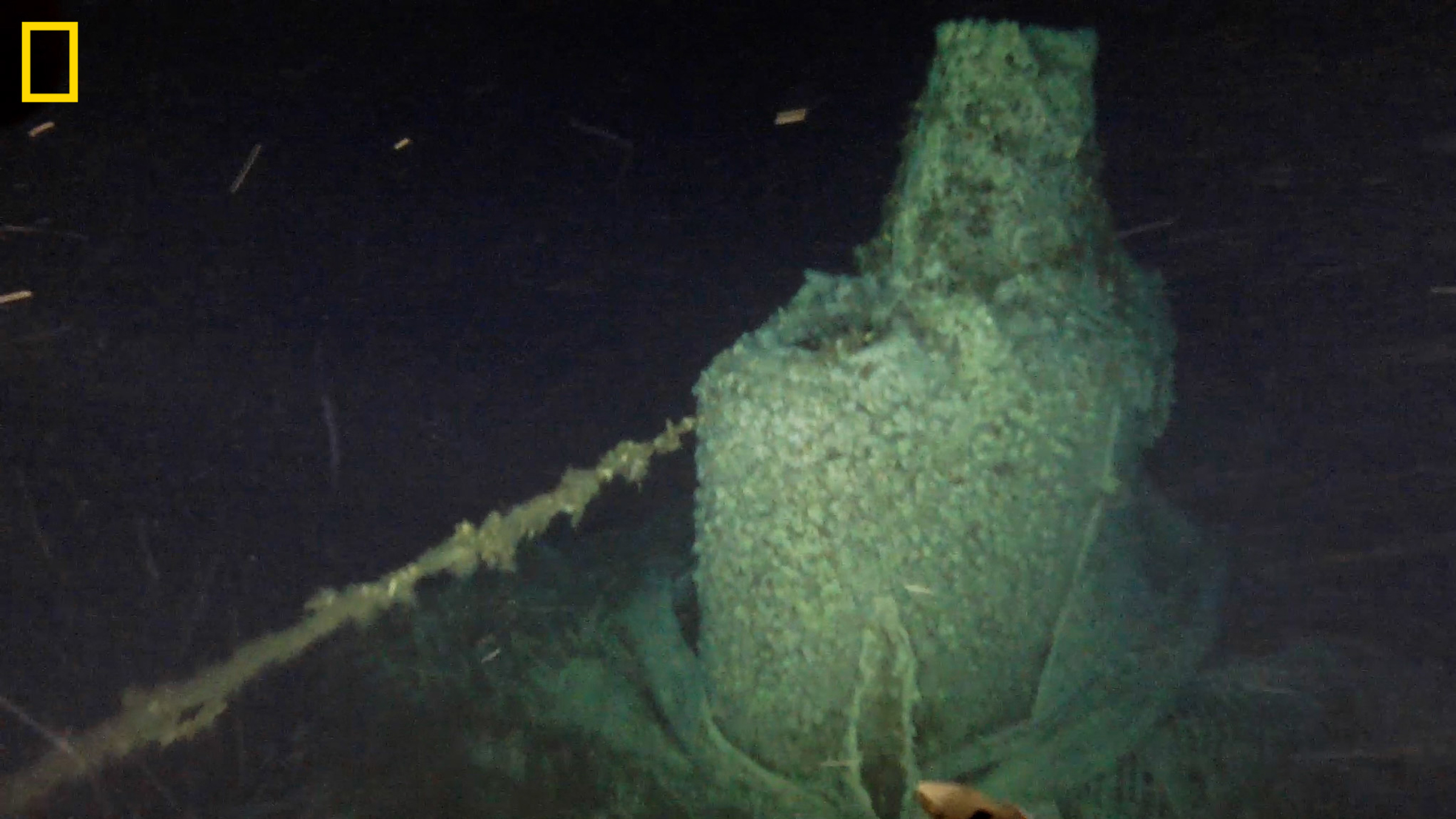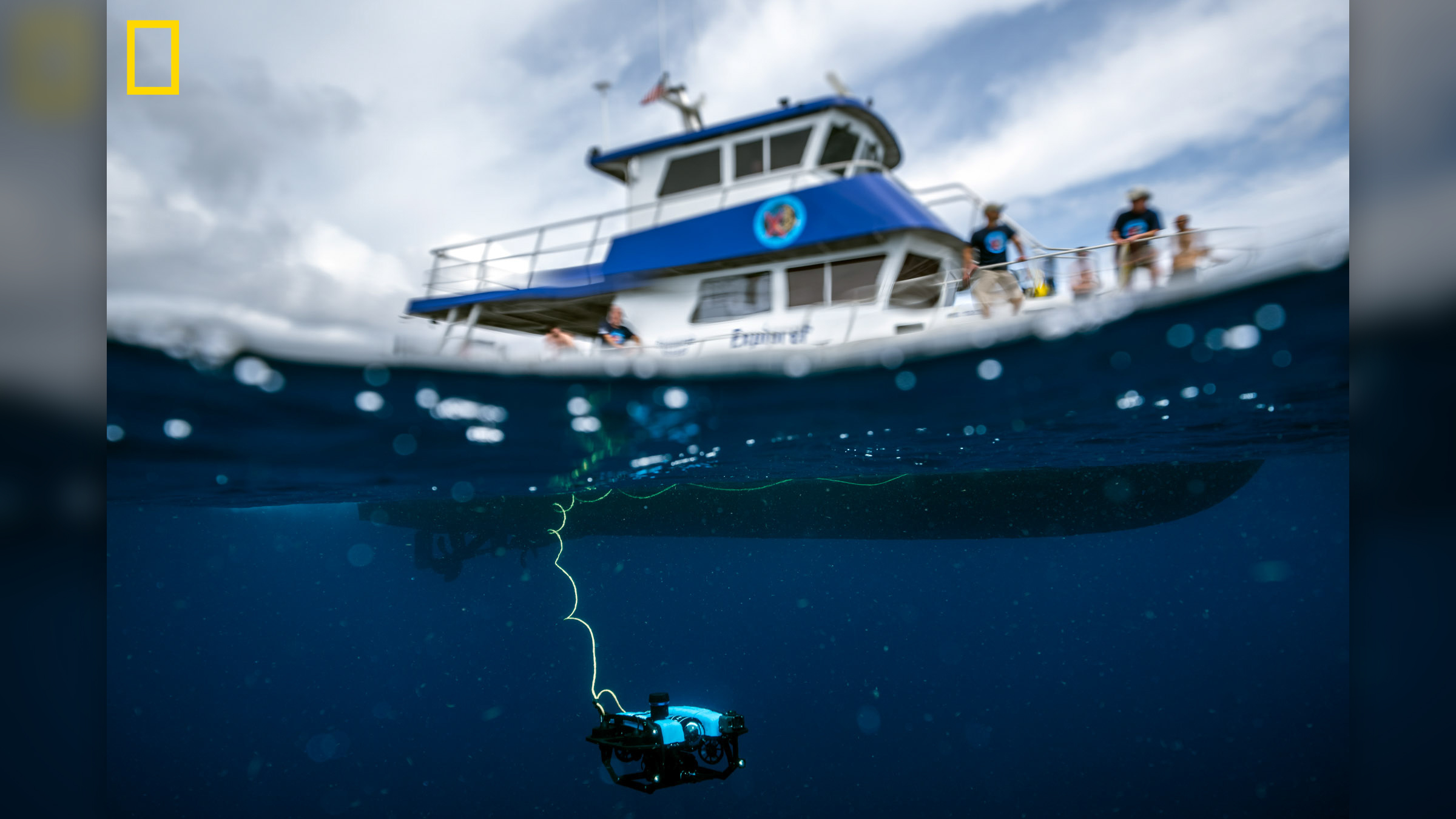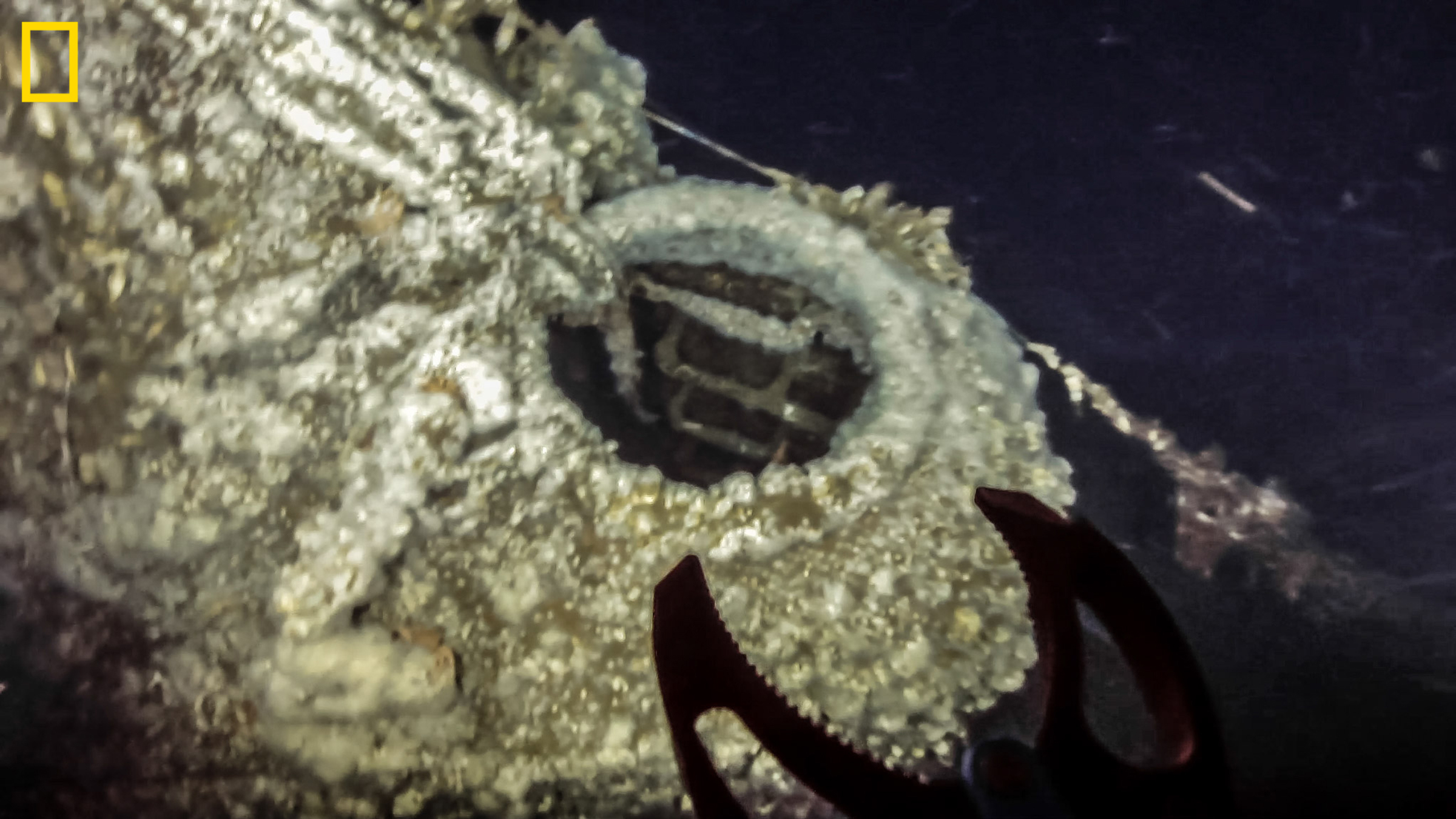WWI German U-boat discovered off US coast 100 years after it sank
U.S. warplanes blasted the U-boat during target practice.

A team of shipwreck hunters has discovered an extraordinary sunken vessel off the East Coast of the United States: the wreck of a World War I German U-boat sunk by U.S. warplanes a century ago for target practice.
According to an exclusive report by National Geographic, the team confirmed the identity of the wreck in early September as that of SM U-111, a submarine that served in the Imperial German Navy. After Germany agreed to an armistice in 1918, the U-boat surrendered to the British, who saved a handful of the early submarines to the U.S. to study and reverse engineer. In 1922, the U.S. Navy deliberately sank the vessel, but its exact location was not disclosed.
But in early July, wreck researcher Erik Petkovic and his colleagues found the SM U-111 with a remotely-operated underwater vehicle (ROV) at a depth of about 400 feet (120 meters) and about 40 miles (65 kilometers) off the coast of Virginia.
"We were lucky," Petkovic told Live Science, describing the live video images sent back to their research ship through the tether of the ROV. "We were on the bottom of the Atlantic Ocean, and we saw the wreckage. We panned the camera, and the conning tower was right there." (A conning tower is the raised platform above the top deck of a submarine.)
Related: WWI German sub spotted off French coast, 100 years after its crew surrendered
The SM U-111 was one of five German U-boats from World War I that were sunk in U.S. waters (there are also eight from World War II) and it's the last to be rediscovered.
When the U-boat sank, the U.S. Navy thought the seawater at the location was much deeper, and that the vessel would fall to the seafloor about 1,600 feet (500 m) below the surface, Petkovic said.
Get the world’s most fascinating discoveries delivered straight to your inbox.
But knowledge of the depths was imperfect 100 years ago, and so SM U-111 came to rest in relatively shallow water next to a deep abyss. "If it was one mile to the east, it was in the abyss and it never would have been seen again," Petkovic said.
Submarine menace
Germany built the SM U-111 in the northern port city of Kiel in 1916 and it joined the war at sea in early 1918. The submarine made three raids on commercial shipping vessels in the Irish Sea and the English Channel, and sank at least three Allied merchant ships.
"The first U-boat war from 1914 to 1918 often gets overlooked," Innes McCartney, a nautical archaeologist at Bangor University in the United Kingdom, told Live Science in an email. "But it is important to recognize that in comparison to World War II, the U-boats of the Kaiserliche Marine [Imperial German Navy] sunk twice the number of ships and sustained only 20 percent of the losses."
McCartney was not involved in the rediscovery of the SM U-111, but he's discovered other World War I U-boat wrecks.
"Importantly for the Allies, had it not been for the experience gained in 1917 and 1918 in particular, the campaign against the U-boats in World War II would have proven more of a challenge," he said.
After Germany agreed to the armistice in November 1918, the SM U-111 was surrendered to the British and then given to the U.S. Navy; and in April 1919 it set out for the U.S. with a crew of 32 U.S. sailors — 17 of whom had never been aboard a submarine before, Petkovic said.
To save time, the commander chose the shortest — and most dangerous — northern route across the Atlantic, which was strewn with icebergs and had claimed the R.M.S. Titanic seven years before.
In addition, the submarine had only German signage, so the U.S. crew didn't know how to operate the vessel's gyro-compass, and had to navigate with a magnetic compass; and a plug in an open valve made of a "hard, gummy substance," secretly installed by German saboteurs, dissolved in the seawater four nights into the voyage, flooding and almost sinking the vessel.
"It's really remarkable that they survived," Petkovic said.
Related: Lake Mead dwindles, and a WWII-era 'swamp boat' emerges
U-boat wreck
After its arrival on the U.S. East Coast, SM U-111 was used to promote a final 1919 issue of war bonds in Brooklyn, and was then tested against the latest U.S. submarines. Eventually its engines and equipment were stripped out, and in June 1921 U.S. warplanes using it for target practice sank the German sub.
But the vessel was considered a navigation hazard at the location where it first sank; and so it was raised and towed into deeper water in August 1922, where it was sunk for the last time by opening its hatches and setting off an explosive depth-charge nearby. Its exact location was not publicly disclosed.
Petkovic had searched for the wreck of SM U-111 for several years, after noting that the other deliberate wrecks of U-boats in U.S. waters were found in shallower waters than expected. He said the key to the discovery was determining which U.S. Navy ship had towed the disabled U-boat to its final destination, and then getting access to its logbook. They found the wreck of SM U-111 almost exactly at the location described in the ship's logbook. "It was right on the money, really close to the numbers that we had," he said.
Petkovic now hopes to dive to the wreck next summer, although it's at an extreme depth even for technical divers with the latest rebreather equipment, which recycles the gases divers exhale and allows them to stay underwater longer.
"It's pushing the limit in terms of rebreather technology and the limits of human endurance," he said. "But there are guys on our team that are capable of doing it… it's still a dangerous dive, but that is a goal of ours."
You can read more about the German U boat discovery on National Geographic.
Tom Metcalfe is a freelance journalist and regular Live Science contributor who is based in London in the United Kingdom. Tom writes mainly about science, space, archaeology, the Earth and the oceans. He has also written for the BBC, NBC News, National Geographic, Scientific American, Air & Space, and many others.




